
At deliberation’s end:
There is a shared document! It’s a mutual understanding of…
- What the problem space actually is
- Where the deepest problems and causes lie
- Where the potential levers are to make change
- The possible trade-offs that might have to be made
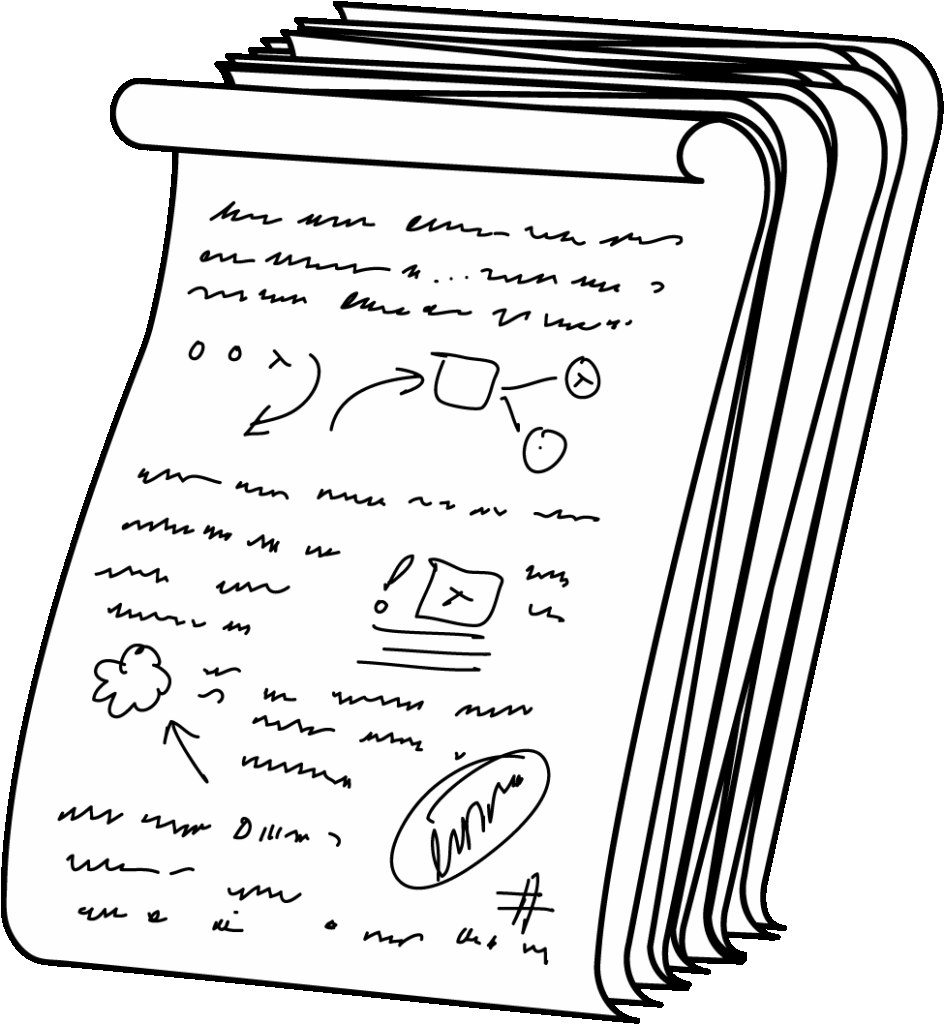
…which is either a lot of paper in the room or an online document.
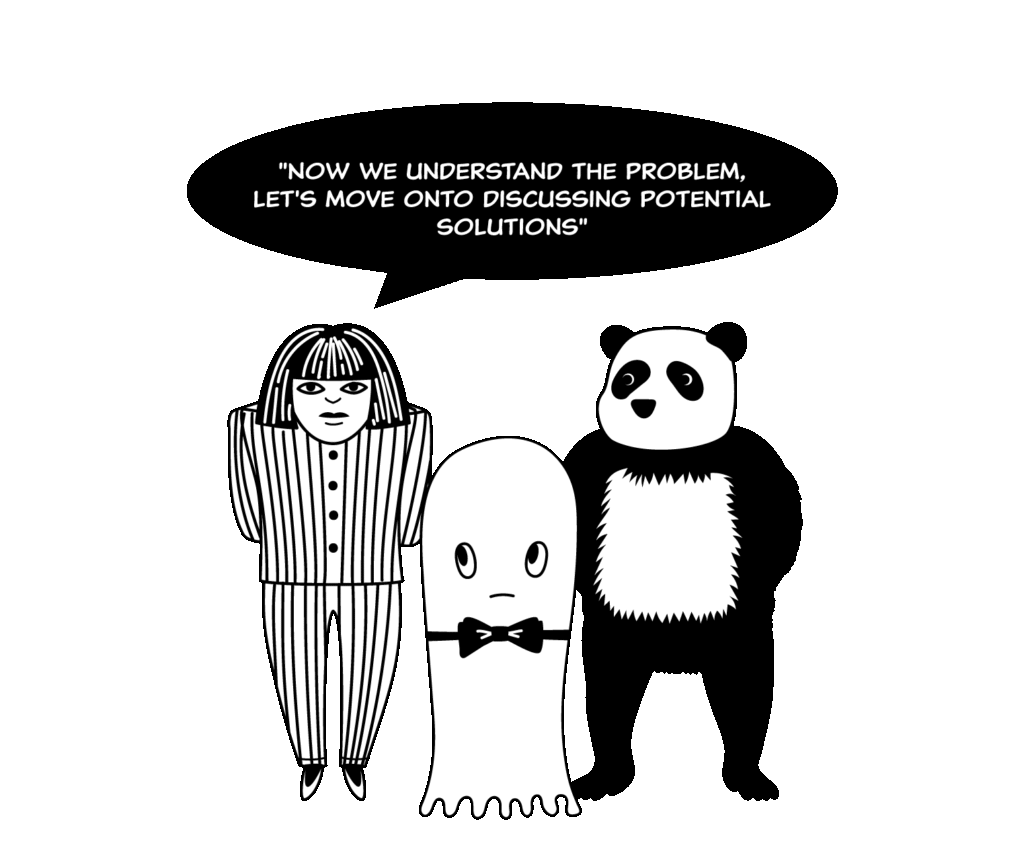
Crafting solutions
Citizens sub-divide into smaller groups to discuss each main area of the issue.
Each group discusses and builds up its recommendation for their area.
“As Team Pollution, let’s focus on a carbon tax to deter drivers”
Facilitators will continuously drag citizens back to their agreed principles and remind them of all the learnings.
Facilitators may see citizens creating something they think is wrong… but shouldn’t get involved so long as they’re on track. It’s a fine line!
Bringing each team’s recommendations together into a cohesive whole
There are several techniques facilitators use to wrangle this.
“Ambassadors” from each group are constantly visiting other groups to share and learn. This prevents tunnel vision from forming in each group.
“We still want to recommend a carbon tax, but after talking to Team B we see it’ll have a cost to several groups. So we now ALSO recommend financial support that…”
Put up a work-in-progress document from a group that all citizens can view and comment on
Plenty of coffee breaks and informal moments for citizens to wander around and view progress of different areas
Permanently swap people out between groups
Remind citizens there will be a vote on each recommendation later – so anything too ill-informed will not move forward
The goal and the challenge:
Always lean on the whole room’s collective intelligence, rather than – for example – two people who are super obsessed by one thing and aren’t thinking about the wider issue.
The epic document of recommendations
Every sub-group’s recommendations are brought together to form a long, first-draft document.
This gets sent back to the stakeholder group (remember them?), who can review and give feedback to the citizens – who choose what to change.
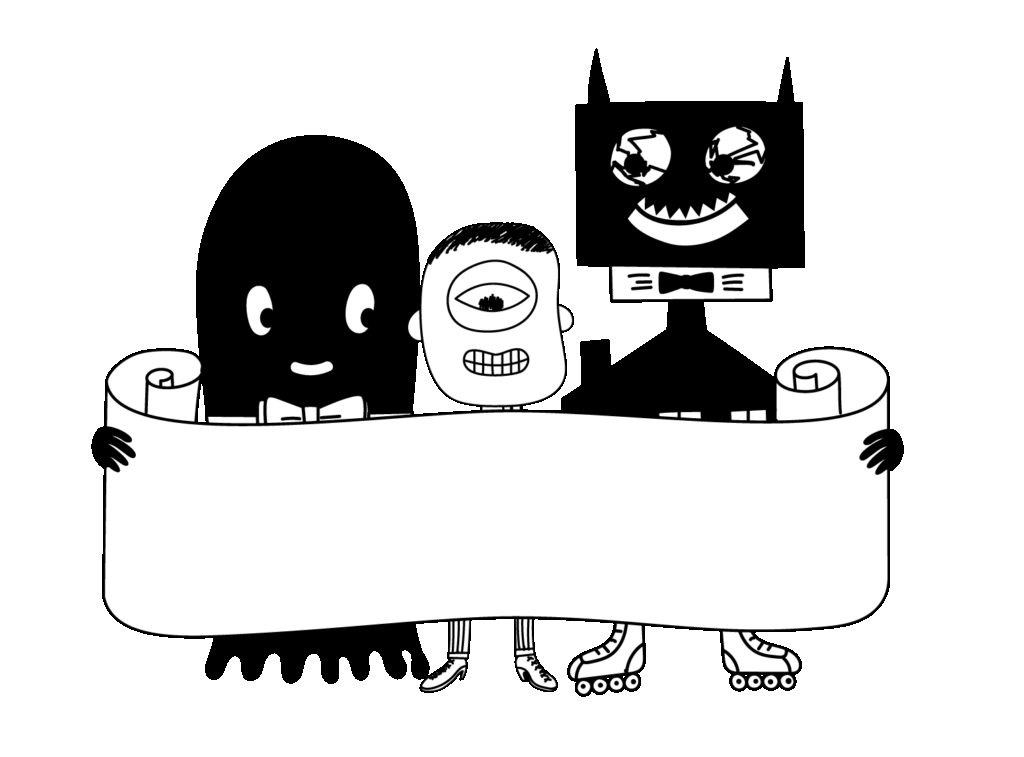
VOTING!
Every recommendation laid out in the long document is voted on by the citizens – whatever remains becomes the official output of the assembly
How?
The simplest way is a basic “for” or “against” vote. Or citizens could be asked to rate their feelings (“Strongly agree”, “I can live with this”, etc).
Some assemblies put a limit or cut-off point on how many recommendations make it into the final document.
“Only the 6 highest-voted recommendations will make it”
Other assemblies keep all recommendations in, BUT shows the consensus of each one.
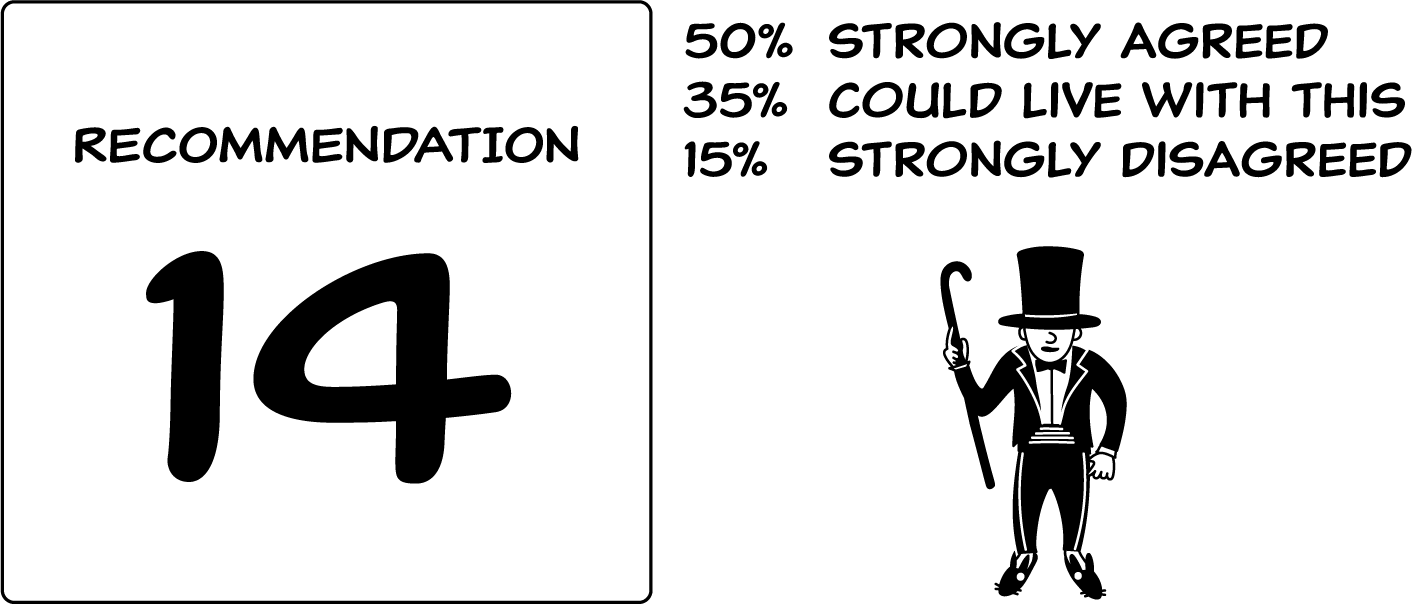
The goal is NOT to arrive at a forced, “we’re all happy” consensus
Rather, this document should reflect the nuance and compromises of a difficult situation
It’s more important that citizens disagree and commit.
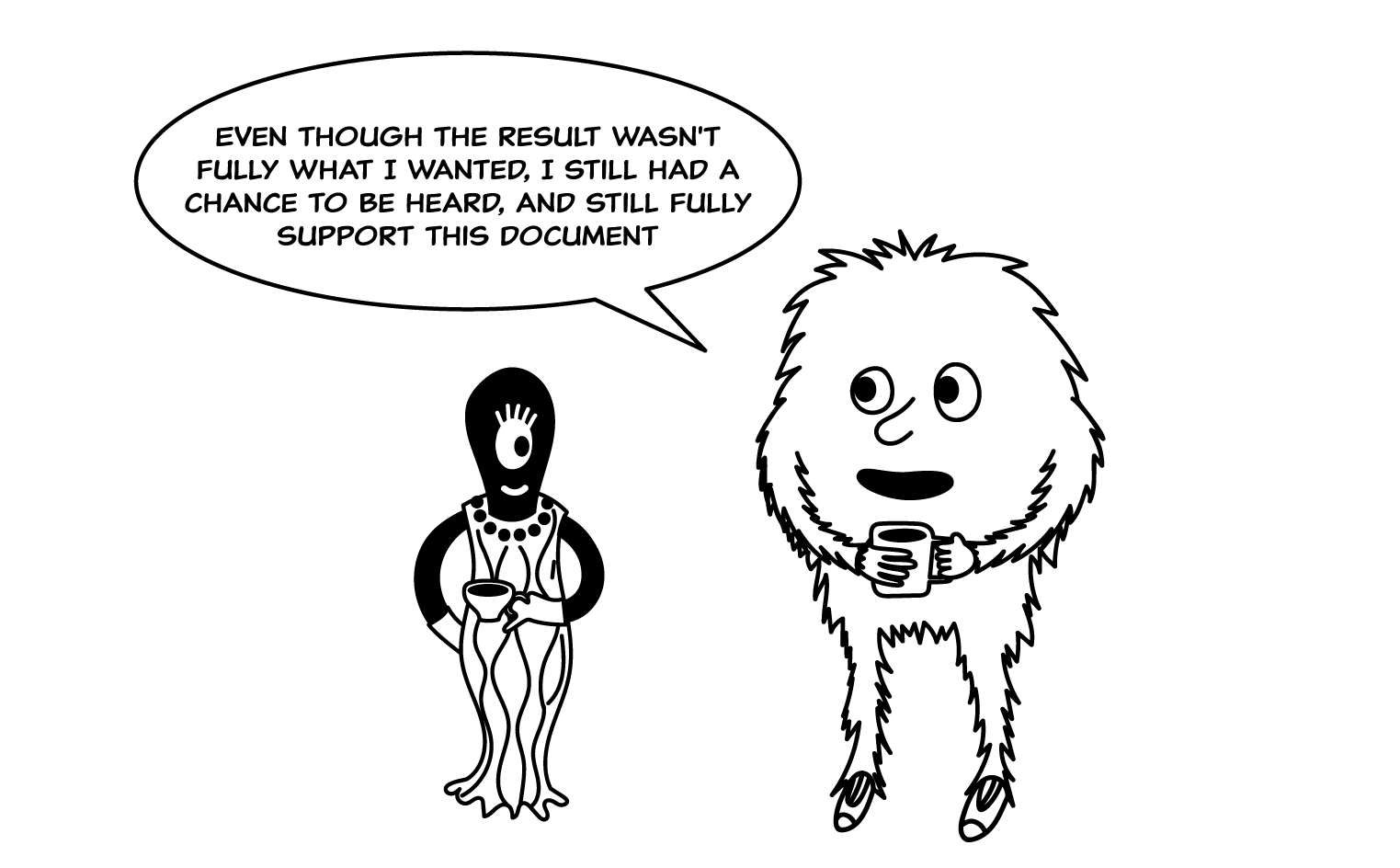
So by the end…
The amazing citizens (with the help of the incredible facilitators) have arrived at a series of recommendations on a complicated issue that are…
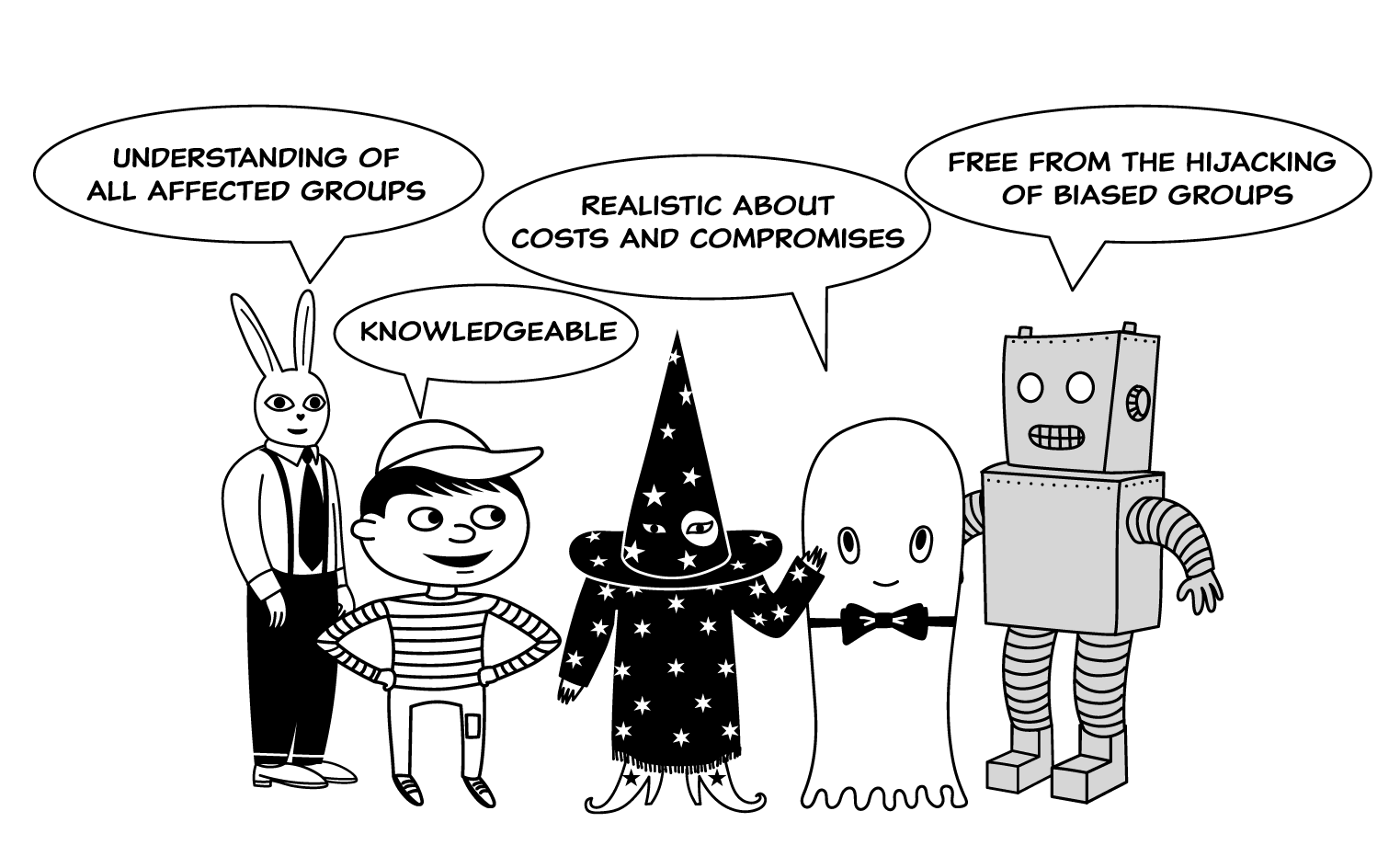
Well done! And now everyone can sleep!


